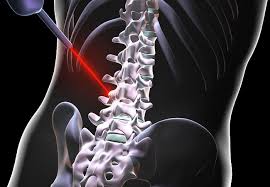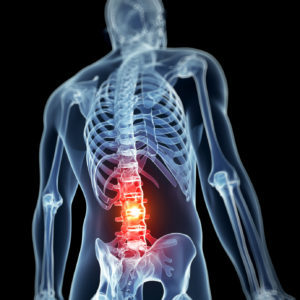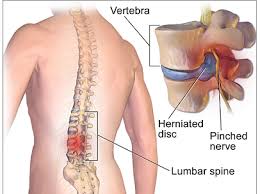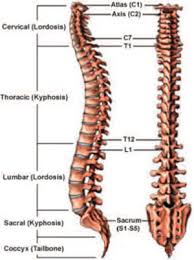



If you’ve struggled with back pain for any length of time, you may be wondering if spine surgery is your only treatment option. Sometimes, surgery is the only treatment. However, there’s good news. The vast majority of back problems can be remedied with non-surgical treatments—often referred to as non-surgical or conservative therapies.
Some conditions, including a disc herniation or spinal stenosis, compress the nerves within the spinal column which can lead to pain, tingling, numbness, muscle weakness, and other more severe symptoms. Spinal surgery is typically required with this condition to avoid permanent impairment. This can be accomplished through surgeries like a laminectomy, ALIF, or XLIF.
An unstable spine is defined as the inability of the spinal column to maintain its natural form under normal usage conditions. A healthy spine provides structure, protection, and support for the body, but an unstable spine can no longer hold together the spinal ligaments, muscles, disc and bones in such as way as to provide these essential functions.
We see unstable spines in a lot of conditions including spinal fractures, spondylolisthesis, and even sometimes an extreme disc injury. Surgery is often required if symptoms progress to intractable back pain, leg pain, or significant neurologic problems from a pinched nerve. This is best achieved by fusing the unstable parts of the spine through an ALIF, PLIF, or Lateral Interbody Fusion.
Some conditions, including scoliosis, kyphosis, and flat-back syndrome, affect the natural curvature of the spine and result in various impairments. Scoliosis and kyphosis are typically managed non-operatively through bracing and physical therapy, but in instances in which the spinal curvature exceeds a certain degree, surgical intervention is required to realign the spine. The same is true for flat-back syndrome if symptoms are not relieved through non-operative measures.

Computer-assisted image guidance allows surgeons to view the operative site in far finer clarity than traditional visualization techniques.
Aging, improper body mechanics, trauma and structural abnormalities can injure your spine, leading to back pain and other symptoms such as leg pain and/or numbness or even leg weakness. Chronic back pain is a condition that generally requires a team of health professionals to diagnose and treat. Before resigning yourself to surgery, consider getting opinions from several spine specialists. This investment of time and information-gathering will help you make an informed treatment decision that will best support your lifestyle and desired level of physical activity.

Traditionally, spine surgery is usually performed as open surgery. This entails opening the operative site with a long incision so the surgeon can view and access the spinal anatomy. However, technology has advanced to the point where more spine conditions can be treated with minimally invasive techniques.
Does not involve long incisions, open manipulation of the muscles and tissue surrounding the spine is avoided, therefore, leading to shorter operative time. In general, reducing intraoperative (during surgery) manipulation of soft tissues results in less postoperative pain and a faster recovery.
Computer-assisted image guidance allows surgeons to view the operative site in far finer clarity than traditional visualization techniques. In addition, implants such as rods or screws can be inserted and positioned with a greater degree of accuracy than is generally achieved with conventional techniques.
In computer-assisted image guidance, images taken preoperatively (before surgery) are merged with images obtained while the patient is in surgery, yielding real-time views of the anatomical position and orientation of the operative site while the patient is undergoing surgery. Preoperative computed tomography (CT) and intraoperative fluoroscopy (real-time x-ray) are generally used, as these enable surgeons to operate with a high level of precision and safety.
Not all patients are appropriate candidates for MISS procedures. There needs to be relative certainty that the same or better results can be achieved through MISS techniques as with an open procedure.
There are a number of conditions that may lead to spine surgery.

Removal of a herniated intervertebral disc. Therefore, removing pressure from the compressed nerve. Microdiscectomy is a MISS procedure.
Laminectomy: Removal of the thin bony plate on the back of the vertebra called the laminae to increase space within the spinal canal and relieve pressure.
Laminotomy:Removal of a portion of the vertebral arch (lamina) that covers the spinal cord. A laminotomy removes less bone than a laminectomy.
Both laminectomy and laminotomy are decompression procedures. “Decompression” usually means tissue compressing a spinal nerve is removed.
Foraminotomy:Removal of bone or tissue at/in the passageway (called the neuroforamen) where nerve roots branch off the spinal cord and exit the spinal column.

Disc replacement: As an alternative to fusion, the injured disc is replaced with an artificial one.
Spinal fusion: A surgical technique used to join two vertebrae. Spinal fusion may include the use of bone graft with or without instrumentation (eg, rods, screws). There are different types of bone graft, such as your own bone (autograft) and donor bone (allograft).
Examples of spinal instrumentation include plates, bone screws, rods, and interbody devices; although, there are other types of devices your surgeon may recommend in treatment of your spinal disorder. The purpose of instrumentation is to stabilize or fix the spine in position until the fusion solidifies.